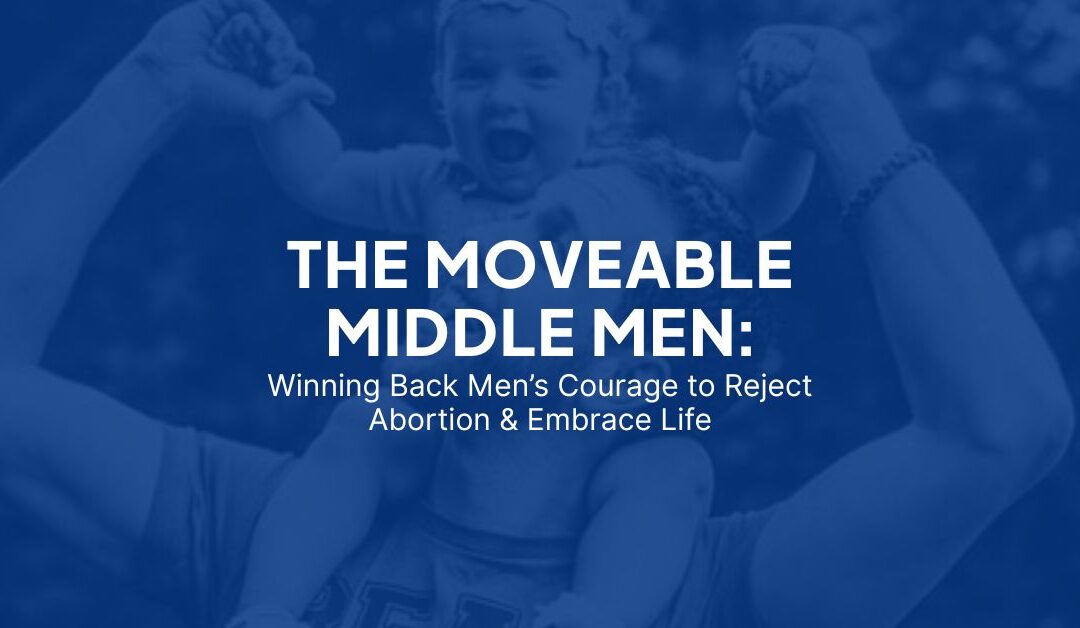Despite an ever-changing landscape on legal abortion and high tensions at state houses across the country following the June 24th Supreme Court decision to reverse Roe v. Wade, many Americans continue to avoid taking an extreme position on abortion. Gallup’s May 2022 polling, executed during the frenzy leading up to the Dobbs v. Jackson decision, showed that while 35% of Americans believe abortion should be legal in all circumstances and only 13% believe it should be illegal in all circumstances, more than half of Americans occupy a middle ground. This nebulous middle is where the majority of the population seems to identify. The next question, then, is who exactly makes up this middle ground—and, more importantly, are they moveable?
For five decades, the pro-life and pro-choice movements have battled for the hearts and minds of these “Moveable Middle” Americans. Despite the pro-choice camp having a cultural advantage in academia, law, and entertainment, neither side has yet won the war. With Roe v. Wade finally overturned, the time is ripe for both sides to craft messaging strategies that could shift the Moveable Middle toward their views. But with Planned Parenthood’s annual report showing an increase in abortions, taxpayer funding, and the proliferation of chemical abortion drugs, the task ahead remains daunting.
The pro-life movement, while maintaining a strong digital presence, needs to adopt more sophisticated messaging strategies to move this middle-ground segment effectively. We must ramp up efforts to shift public opinion quickly to secure a lasting victory over the pro-abortion culture. This research was dedicated to understanding where the Moveable Middle Man stands intellectually and emotionally—and how pro-lifers can message to sway his opinion.
At the heart of Students for Life of America (SFLA) is our drive to change minds on abortion, reaching students on campuses and online to start a dialogue. Since 2019, SFLA’s Demetree Institute for Pro-Life Advancement has worked to understand how to reach Millennial and Gen Z men and women more effectively. This paper outlines the findings from our research into the Moveable Middle Men and how we can connect with them more successfully.
TOP FINDINGS:
We studied men between the ages of 20-34 who hold middle-ground opinions on abortion. Four characteristics of the Moveable Middle Man stand out:
- His choice is to avoid the conversation. The Moveable Middle Man often avoids engaging in the debate altogether. The middle ground is not always about balancing both sides of the issue but is more about a space of solitude where he doesn’t feel the pressure to take a definitive stance. This is a form of self-preservation—avoiding conflict or discomfort by simply not weighing in.
- His uncommitted position is a survival tactic. An unplanned pregnancy uniquely engages all five levels of Maslow’s Hierarchy of Needs, making it a highly complex issue for both men and women. Even if a man feels abortion is inherently wrong, he may consider abortion acceptable in a variety of circumstances. His uncommitted position is often a survival tactic—one that allows him to navigate the emotional and intellectual challenges presented by this issue without fully committing to either side.
- He is repelled by both sides of the debate, but the pro-life brand appears the most damaged. Men in the Moveable Middle often feel uninvited by both the pro-choice and pro-life movements. However, the pro-life brand tends to carry the most negative associations among men. Like the Moveable Middle Women, these men are repelled by the extremism they see on both sides of the debate, but the pro-life movement is more often perceived negatively.
- He has a sense of responsibility, defined on his own terms. The Moveable Middle Man generally feels a sense of responsibility, but this is often defined on his own terms. There are certain situations where he finds abortion inexcusable—such as in cases of multiple abortions or late-term abortions—but his view of responsibility is subjective and contextual, shaped by his personal beliefs rather than external pressure.
In conclusion, the Moveable Middle Man is a critical segment of the population that presents both challenges and opportunities for pro-lifers. Understanding his nuanced views—his desire for solitude in the debate, his emotional and intellectual coping mechanisms, and his evolving sense of responsibility—will help us craft messaging that resonates with him. By addressing his concerns thoughtfully, we can begin to move this middle ground toward supporting life and securing a victory over the pro-abortion culture.
THE VIDEOS:
This same research was conducted for Moveable Middle Women. Check that out here.
Moveable Men Final Research PDF

